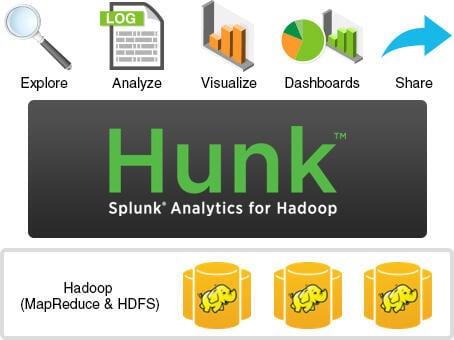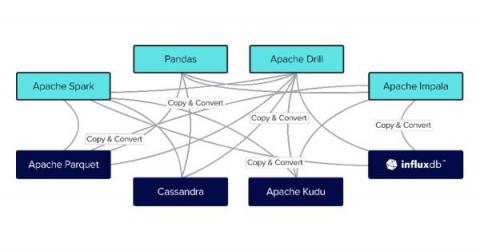Splunk Hunk (Analytics for Hadoop)
Splunk Hunk is the nickname of Splunk Analytics for Hadoop. Hunk is an app available in Splunkbase. It is great for exploring, analyzing and visualizing data in Hadoop and NoSQL data stores. Hunk offers a shortcut around the hard work of inventing and coding every inquiry in Hadoop. Hunk helps to create insights from big data, without the need for specialized skills, fixed schemas, or months of development.











